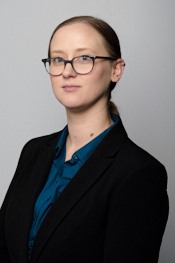Program Information
Quality Assurance of An Integrated Magnetic Resonance Image Guided Adaptive Radiotherapy Machine Using Cherenkov Imaging
J Andreozzi1*, K Mooney2 , P Bruza1 , A Curcuru2 , S Saunders1 , D Gladstone3 , B Pogue1 , O Green2 , (1) Dartmouth College, Hanover, NH, (2) Washington University School of Medicine ,Saint Louis, MO, (3) Dartmouth-Hitchcock Med. Ctr., Lebanon, NH
Presentations
TU-AB-BRA-12 (Tuesday, August 2, 2016) 7:30 AM - 9:30 AM Room: Ballroom A
Purpose: To investigate the viability of using Cherenkov imaging as a fast and robust method for quality assurance tests in the presence of a magnetic field, where other instruments can be limited.
Methods: Water tank measurements were acquired from a clinically utilized adaptive magnetic resonance image guided radiation therapy (MR-IGRT) machine with three multileaf-collimator equipped 60Co sources. Cherenkov imaging used an intensified charge coupled device (ICCD) camera placed 3.5m from the treatment isocenter, looking down the bore of the 0.35T MRI into a water tank. Images were post-processed to make quantitative comparison between Cherenkov light intensity with both film and treatment planning system predictions, in terms of percent depth dose curves as well as lateral beam profile measurements. A TG-119 commissioning test plan (C4: C-Shape) was imaged in real-time at 6.33 frames per second to investigate the temporal and spatial resolution of the Cherenkov imaging technique.
Results: A .33mm/pixel Cherenkov image resolution was achieved across 1024x1024 pixels in this setup. Analysis of the Cherenkov image of a 10.5x10.5cm treatment beam in the water tank successfully measured the beam width at the depth of maximum dose within 1.2% of the film measurement at the same point. The percent depth dose curve for the same beam was on average within 2% of ionization chamber measurements for corresponding depths between 3-100mm. Cherenkov video of the TG-119 test plan provided qualitative agreement with the treatment planning system dose predictions, and a novel temporal verification of the treatment.
Conclusions: Cherenkov imaging was successfully used to make QA measurements of percent depth dose curves and cross beam profiles of MRI-IGRT radiotherapy machines after only several seconds of beam-on time and data capture; both curves were extracted from the same data set. Video-rate imaging of a dynamic treatment plan provided new information regarding temporal dose deposition.
Funding Support, Disclosures, and Conflict of Interest: This study has been funded by NIH grants R21EB17559 and R01CA109558, as well as Norris Cotton Cancer Center Pilot funding.
Contact Email:

